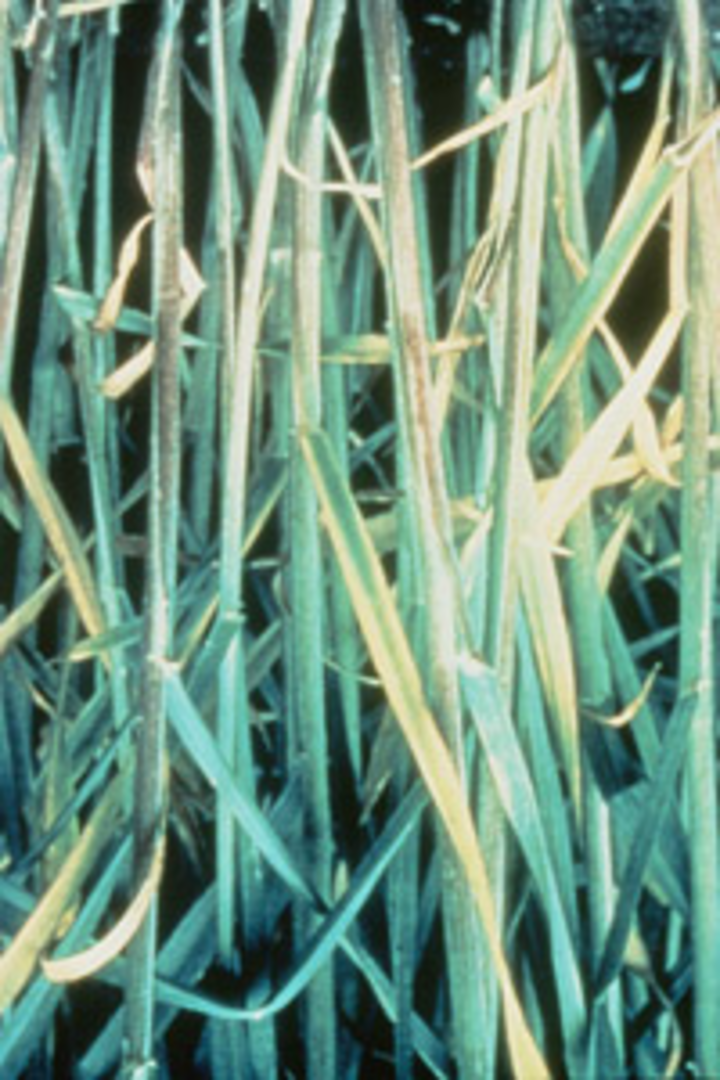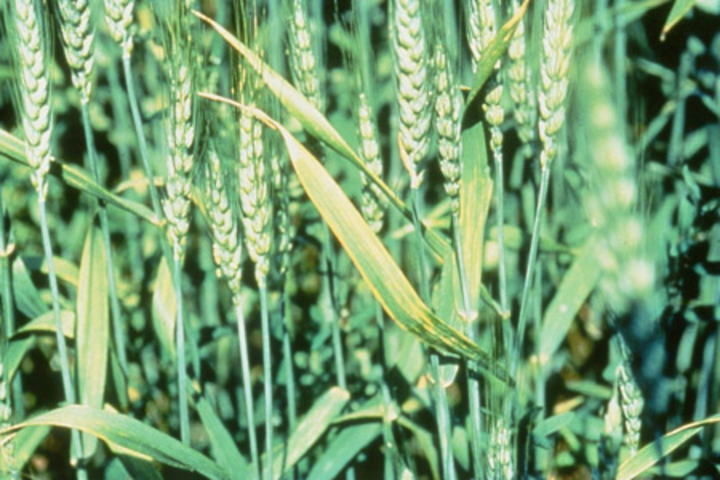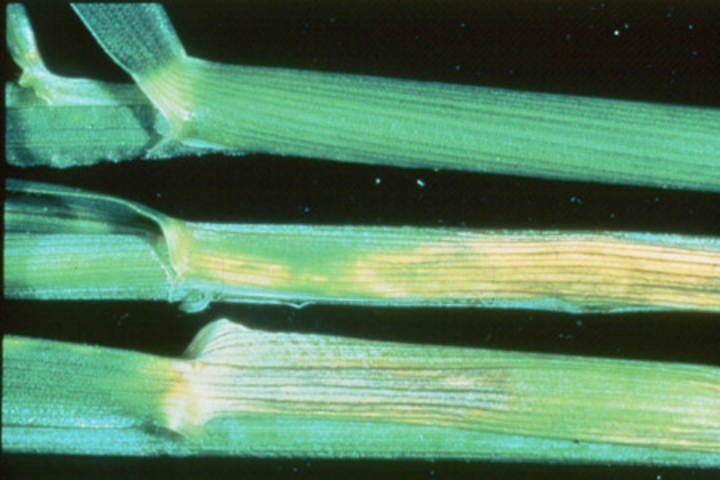Symptom Identification Key for Wheat and Other Small Grains
Use the following key to help identify seven nutrient disorders observed in Nebraska wheat and small grains.
| A1. | Symptoms appear first or are more severe on older and/or fully expanded leaves. Select B1 or B2 | B1. Symptoms advance from leaf tip towards the base; uniform distribution with no interveinal chlorosis. Go to D |
| B2. Symptoms begin in the leaf mid-section; generally localized but can spread over whole leaf. Go to E | ||
| A2. | Symptoms appear first or are more severe on younger leaves. Select C1 | C1. Youngest leaves are pale green, yellow or white. Go to F |
| D1. | Pale green plants with pale yellow older leaves. | Nitrogen deficiency 
|
| D2. |
Dark green plants, often with purple color; oldest leaves may be dark yellow to orange turning to brown. | Phosphorus deficiency 
|
| D3. |
Pale green plants with a limp or wilted appearance; bright yellow chlorosis turning brown along the margins of the oldest leaves. | Potassium deficiency 
|
| E1. | Green yellow plants with yellow interveinal chlorosis turning to brown necrosis on the middle leaves. | Magnesium deficiency 
|
| E2. |
Stunted, pale green plants with localized white to pale yellow chlorosis, turning to brown or gray necrotic lesions. | Zinc deficiency


|
| F1. | Yellow leaves with prominently green veins
| Iron deficiency 
(photo courtesy of CIMMYT) |
| F2. |
Pale yellow plants; uniformly yellow leaves without necrosis | Sulfur deficiency 
|
